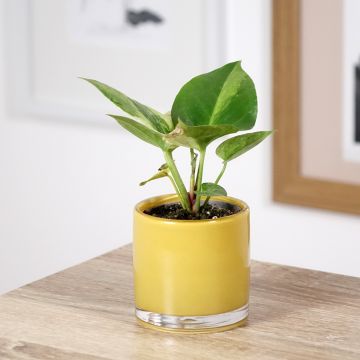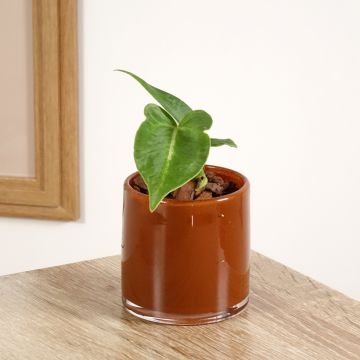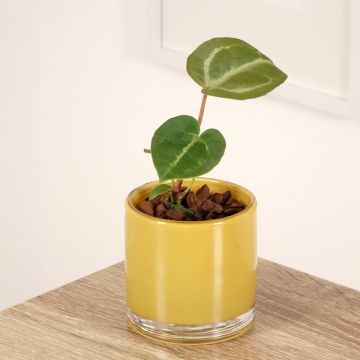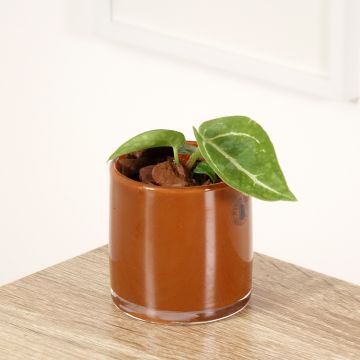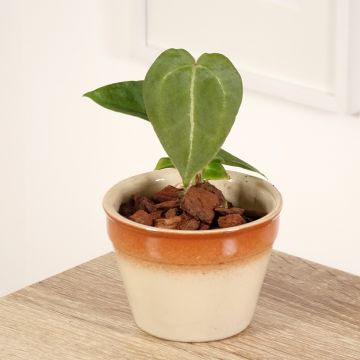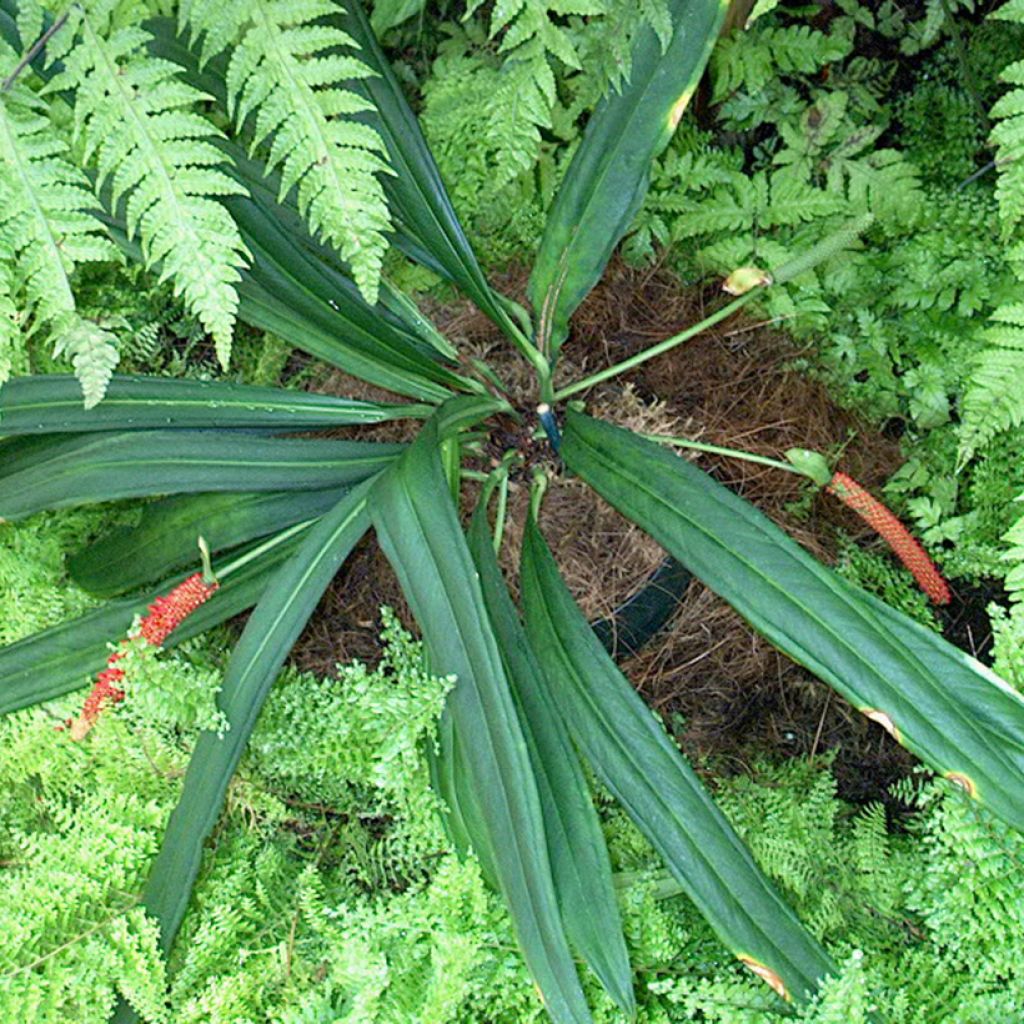

Anthurium bakeri - Flamingo Flower
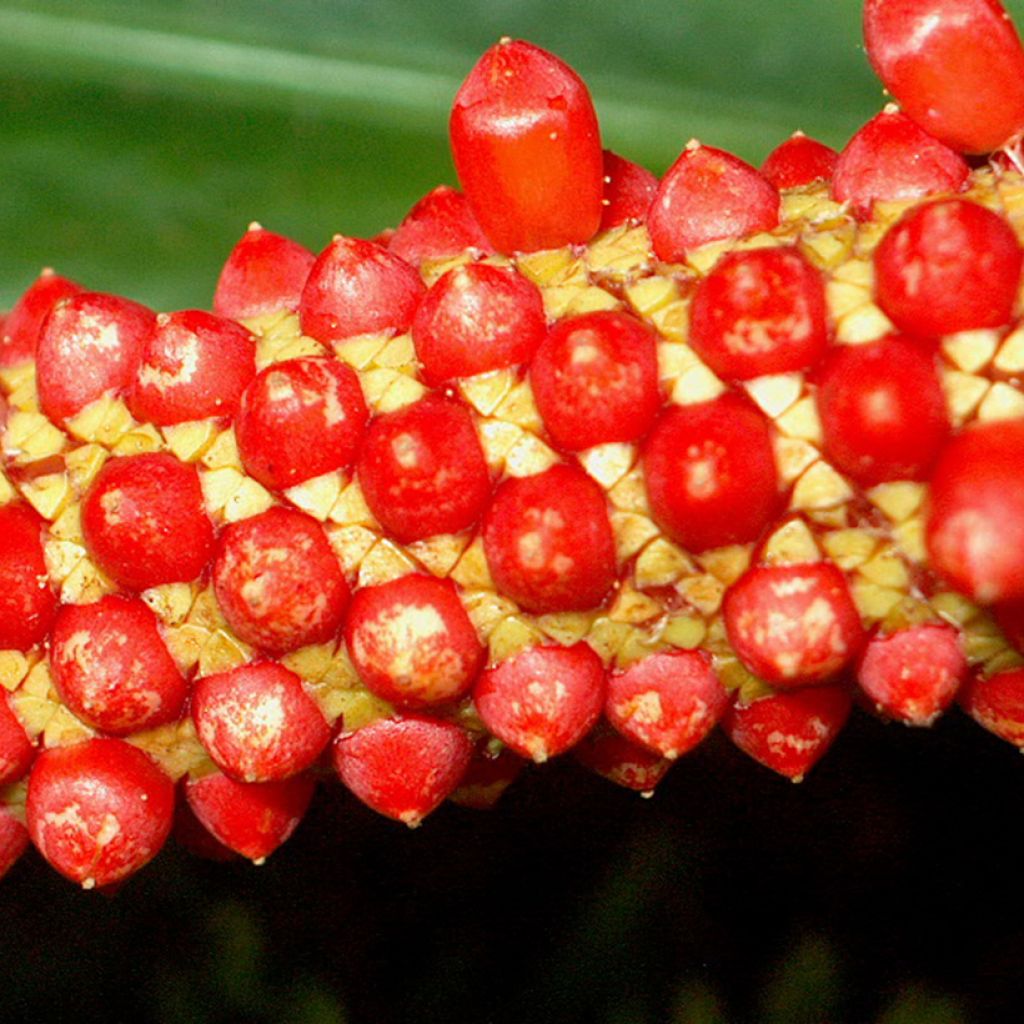

Anthurium bakeri - Flamingo Flower
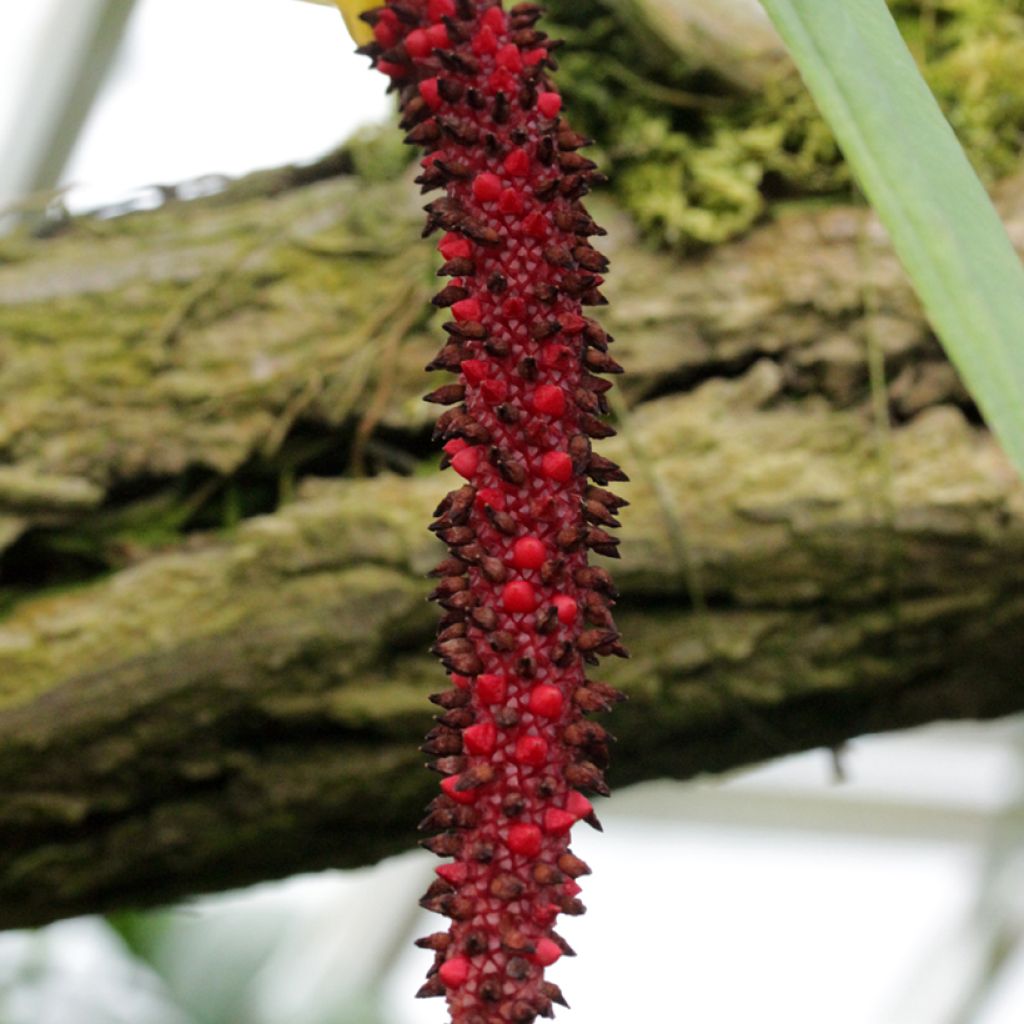

Anthurium bakeri - Flamingo Flower


Anthurium bakeri - Flamingo Flower
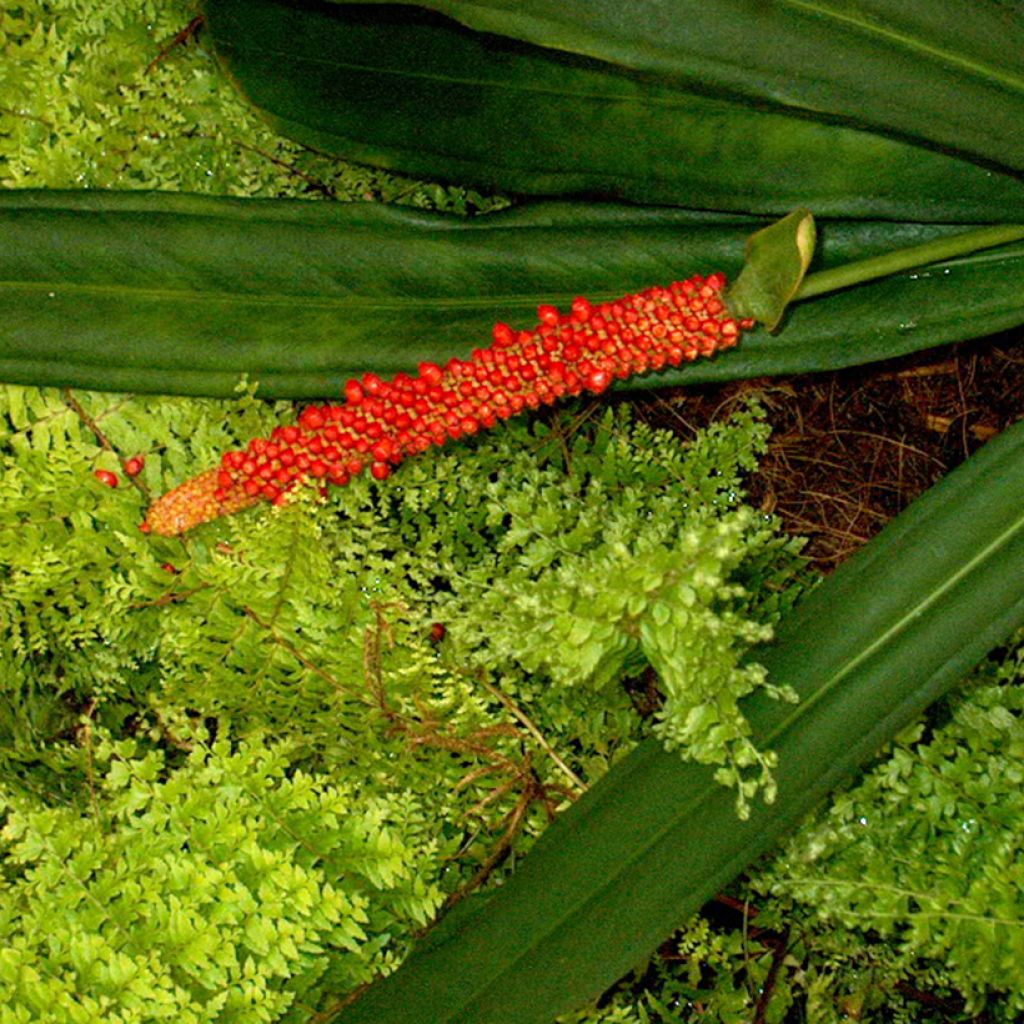

Anthurium bakeri - Flamingo Flower
Anthurium bakeri - Flamingo Flower
Anthurium bakeri
Flamingo plant, Flamingo flower, Laceleaf
Special offer!
Receive a €20 voucher for any order over €90 (excluding delivery costs, credit notes, and plastic-free options)!
1- Add your favorite plants to your cart.
2- Once you have reached €90, confirm your order (you can even choose the delivery date!).
3- As soon as your order is shipped, you will receive an email containing your voucher code, valid for 3 months (90 days).
Your voucher is unique and can only be used once, for any order with a minimum value of €20, excluding delivery costs.
Can be combined with other current offers, non-divisible and non-refundable.
Why not try an alternative variety in stock?
View all →This plant carries a 30 days recovery warranty
More information
We guarantee the quality of our plants for a full growing cycle, and will replace at our expense any plant that fails to recover under normal climatic and planting conditions.
Description
The Anthurium bakeri is an exotic houseplant that captivates with its lush foliage and decorative red fruiting. This epiphytic plant forms a clump of long, narrow, trailing leaves in a deep green hue. It will stand out beautifully in a hanging basket or on a shelf. Perfect for urban jungle-inspired decor, this plant also thrives in a sheltered conservatory. Place it in a bright spot without direct sunlight and maintain high ambient humidity.
The Anthurium bakeri, belonging to the Araceae family, is a perennial epiphytic plant native to the humid tropical forests of Central America, particularly from Guatemala to Colombia. This species is also known by the botanical synonyms Anthurium angelorum and A. turrialbense. It stands out for its semi-trailing habit and narrow, lanceolate to oblanceolate leaves, measuring between 19 and 55 cm in length and 2.8 to 9 cm in width. The leaves have a matte, dark green upper surface, while the underside is lighter with reddish glandular pits. The flowering features an erect, pale yellow-green spathe, sometimes tinged with red on the margins, accompanied by a white spadix. The plant is self-fertile, flowering and fruiting easily indoors. The fruits are bright red berries that often develop without pollination, a phenomenon called apomixis. Indoors, the Anthurium bakeri can theoretically flower at any time of the year, but the most favourable periods remain spring and summer. This variety has moderate growth, reaching a height of 30 to 60 cm indoors. All parts of the Anthurium bakeri contain calcium oxalate crystals, making them toxic if ingested.
The Anthurium genus comprises approximately 871 to 1,203 species and belongs to the Araceae family. These plants are primarily epiphytic, growing on other plants without being parasitic. The species are all native to the tropical forests of Central and South America. In their natural habitat, they thrive under dense canopy, benefiting from filtered light, high humidity, and warm temperatures.
To cultivate Anthurium bakeri indoors, it is important to replicate these natural conditions. The plant prefers bright, indirect light, avoiding direct sunlight which can scorch the foliage. High ambient humidity is essential, ideally above 70%. Optimal temperatures range between 25 and 32°C during the day and 21 to 24°C at night. A well-draining, organic-rich substrate is recommended to prevent root rot.
The Anthurium bakeri finds its place in a bright living room, a tropical conservatory, or even a spacious bathroom, where ambient humidity promotes its growth. For a boho-chic style, display it in a wicker hanging basket. In a minimalist or contemporary setting, it can be showcased on a light wood shelf. Pair it with a Philodendron 'El Choco Red' and a Monstera to create a harmonious tropical arrangement.
Report an error about the product description
Anthurium bakeri - Flamingo Flower in pictures


Foliage
Plant habit
Flowering
Botanical data
Anthurium
bakeri
Araceae
Flamingo plant, Flamingo flower, Laceleaf
South America
Safety measures
Other Anthurium - Flamingo Flower
View all →Location
Location
Maintenance and care
Watering tips
Potting advice, substrates and fertilisers
Houseplant care
Disease and pest advice
Maintenance and care
This item has not been reviewed yet - be the first to leave a review about it.
Haven't found what you were looking for?
Hardiness is the lowest winter temperature a plant can endure without suffering serious damage or even dying. However, hardiness is affected by location (a sheltered area, such as a patio), protection (winter cover) and soil type (hardiness is improved by well-drained soil).

Photo Sharing Terms & Conditions
In order to encourage gardeners to interact and share their experiences, Promesse de fleurs offers various media enabling content to be uploaded onto its Site - in particular via the ‘Photo sharing’ module.
The User agrees to refrain from:
- Posting any content that is illegal, prejudicial, insulting, racist, inciteful to hatred, revisionist, contrary to public decency, that infringes on privacy or on the privacy rights of third parties, in particular the publicity rights of persons and goods, intellectual property rights, or the right to privacy.
- Submitting content on behalf of a third party;
- Impersonate the identity of a third party and/or publish any personal information about a third party;
In general, the User undertakes to refrain from any unethical behaviour.
All Content (in particular text, comments, files, images, photos, videos, creative works, etc.), which may be subject to property or intellectual property rights, image or other private rights, shall remain the property of the User, subject to the limited rights granted by the terms of the licence granted by Promesse de fleurs as stated below. Users are at liberty to publish or not to publish such Content on the Site, notably via the ‘Photo Sharing’ facility, and accept that this Content shall be made public and freely accessible, notably on the Internet.
Users further acknowledge, undertake to have ,and guarantee that they hold all necessary rights and permissions to publish such material on the Site, in particular with regard to the legislation in force pertaining to any privacy, property, intellectual property, image, or contractual rights, or rights of any other nature. By publishing such Content on the Site, Users acknowledge accepting full liability as publishers of the Content within the meaning of the law, and grant Promesse de fleurs, free of charge, an inclusive, worldwide licence for the said Content for the entire duration of its publication, including all reproduction, representation, up/downloading, displaying, performing, transmission, and storage rights.
Users also grant permission for their name to be linked to the Content and accept that this link may not always be made available.
By engaging in posting material, Users consent to their Content becoming automatically accessible on the Internet, in particular on other sites and/or blogs and/or web pages of the Promesse de fleurs site, including in particular social pages and the Promesse de fleurs catalogue.
Users may secure the removal of entrusted content free of charge by issuing a simple request via our contact form.
The flowering period indicated on our website applies to countries and regions located in USDA zone 8 (France, the United Kingdom, Ireland, the Netherlands, etc.)
It will vary according to where you live:
- In zones 9 to 10 (Italy, Spain, Greece, etc.), flowering will occur about 2 to 4 weeks earlier.
- In zones 6 to 7 (Germany, Poland, Slovenia, and lower mountainous regions), flowering will be delayed by 2 to 3 weeks.
- In zone 5 (Central Europe, Scandinavia), blooming will be delayed by 3 to 5 weeks.
In temperate climates, pruning of spring-flowering shrubs (forsythia, spireas, etc.) should be done just after flowering.
Pruning of summer-flowering shrubs (Indian Lilac, Perovskia, etc.) can be done in winter or spring.
In cold regions as well as with frost-sensitive plants, avoid pruning too early when severe frosts may still occur.
The planting period indicated on our website applies to countries and regions located in USDA zone 8 (France, United Kingdom, Ireland, Netherlands).
It will vary according to where you live:
- In Mediterranean zones (Marseille, Madrid, Milan, etc.), autumn and winter are the best planting periods.
- In continental zones (Strasbourg, Munich, Vienna, etc.), delay planting by 2 to 3 weeks in spring and bring it forward by 2 to 4 weeks in autumn.
- In mountainous regions (the Alps, Pyrenees, Carpathians, etc.), it is best to plant in late spring (May-June) or late summer (August-September).
The harvesting period indicated on our website applies to countries and regions in USDA zone 8 (France, England, Ireland, the Netherlands).
In colder areas (Scandinavia, Poland, Austria...) fruit and vegetable harvests are likely to be delayed by 3-4 weeks.
In warmer areas (Italy, Spain, Greece, etc.), harvesting will probably take place earlier, depending on weather conditions.
The sowing periods indicated on our website apply to countries and regions within USDA Zone 8 (France, UK, Ireland, Netherlands).
In colder areas (Scandinavia, Poland, Austria...), delay any outdoor sowing by 3-4 weeks, or sow under glass.
In warmer climes (Italy, Spain, Greece, etc.), bring outdoor sowing forward by a few weeks.






























